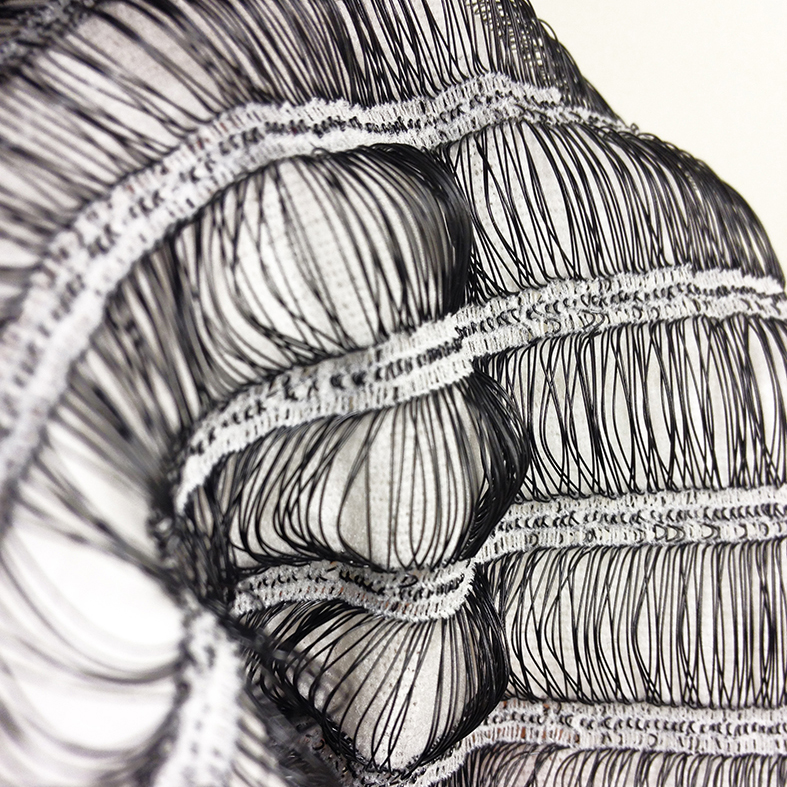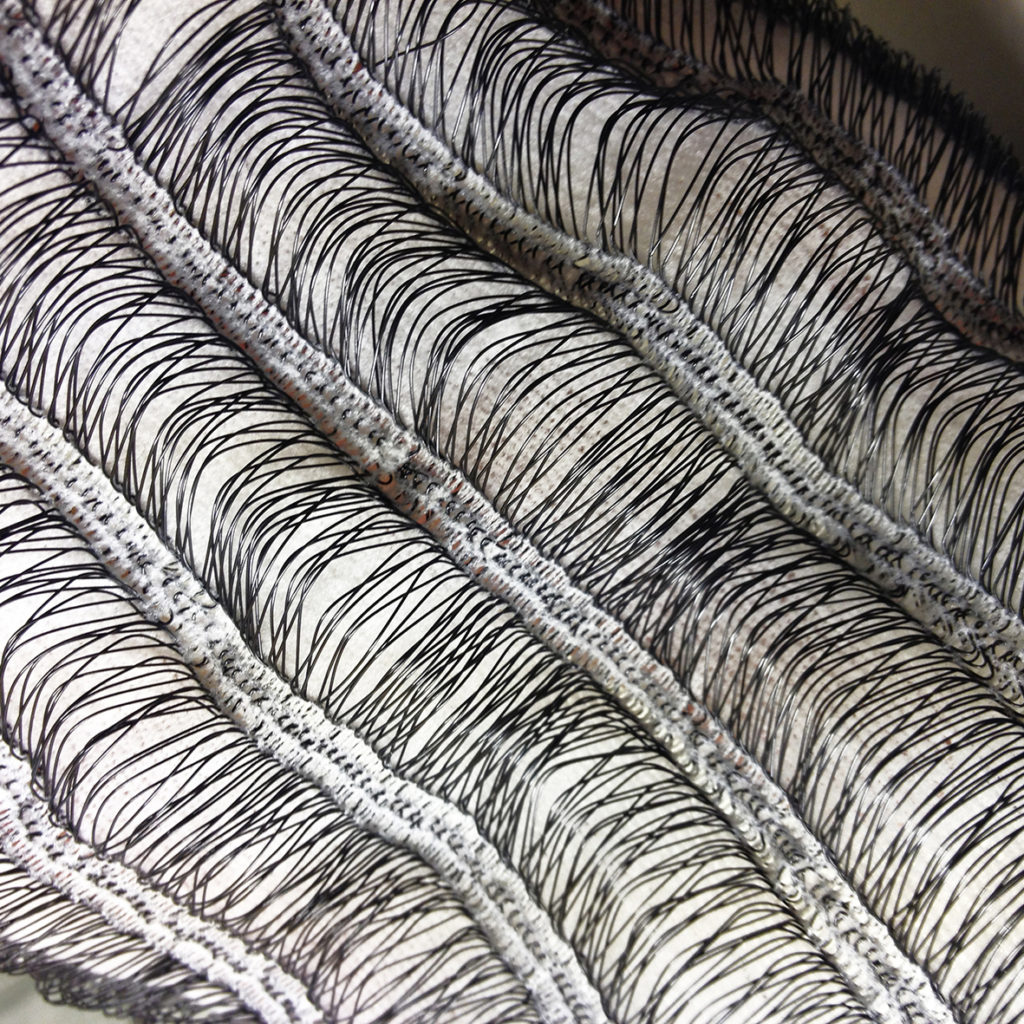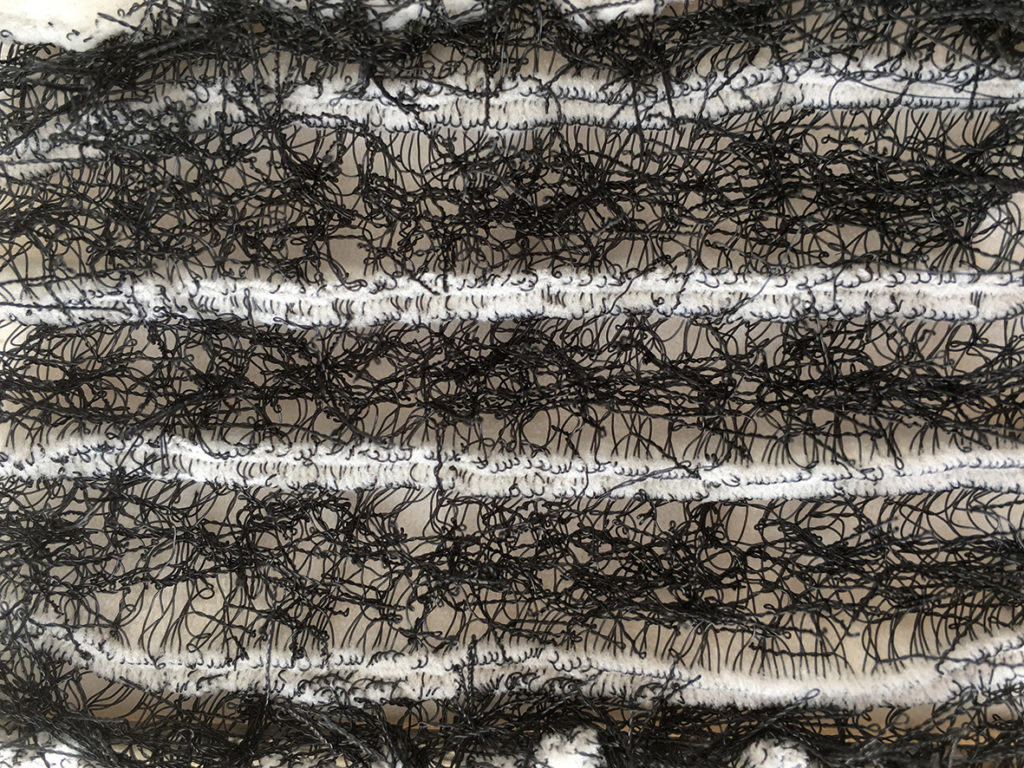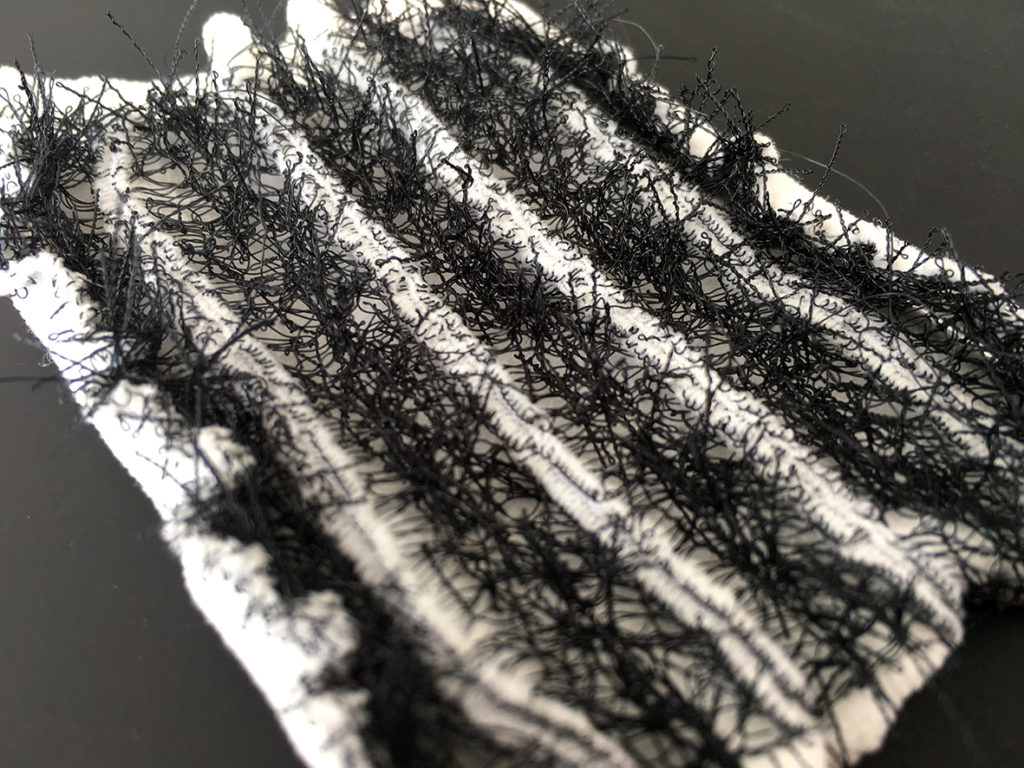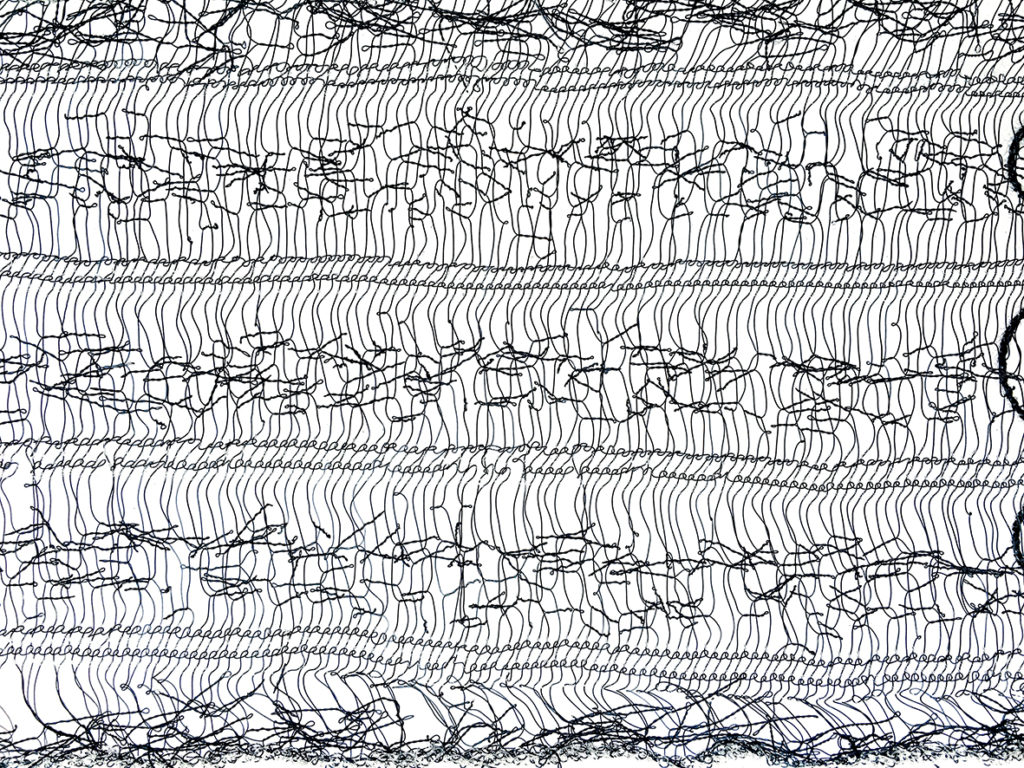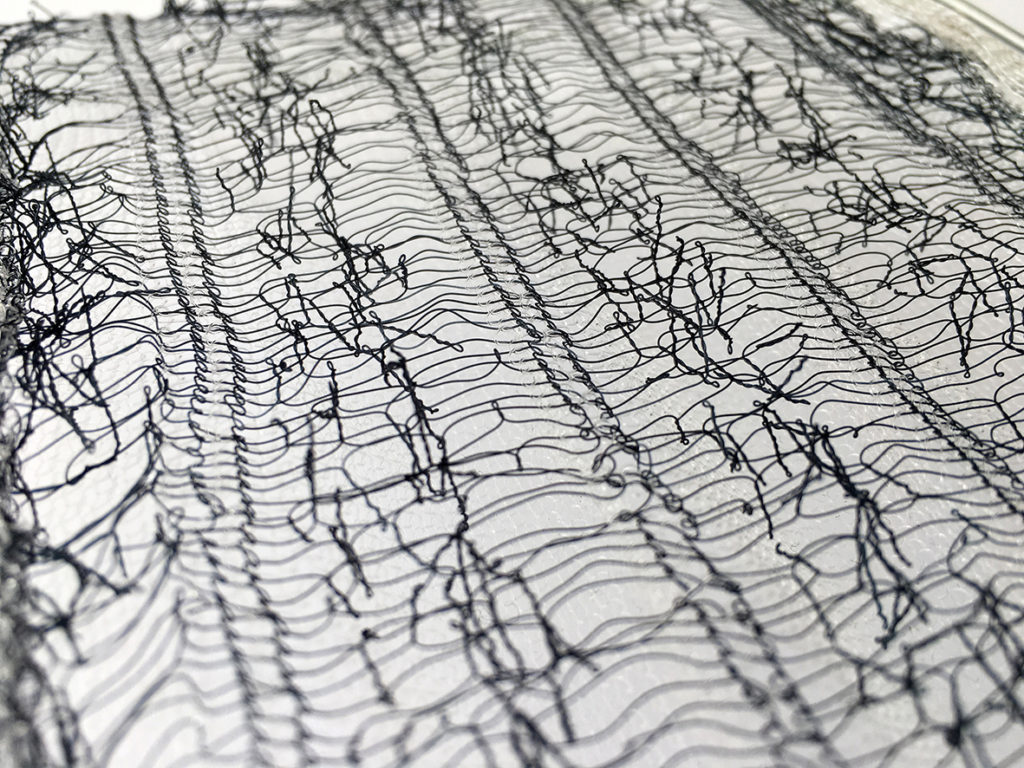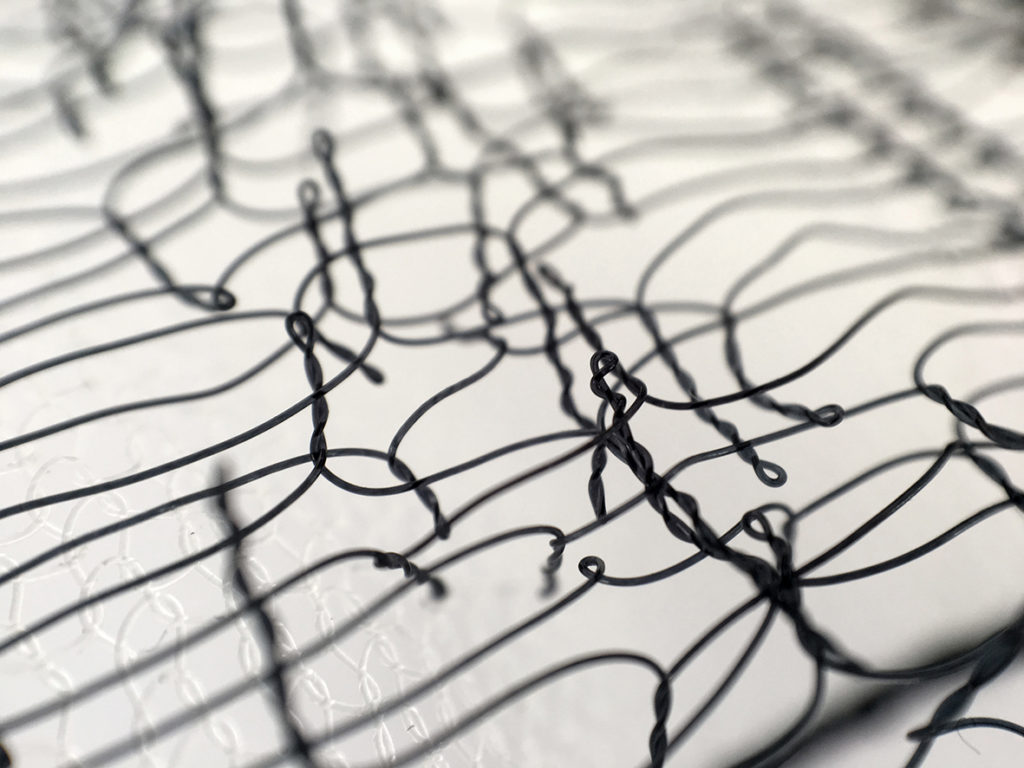Exploring the performative qualities of knitted high-twist filaments
MATERIALS: NYLON MONO- and MULTIFILAMENTS
NOV 2016
The Swedish School of Textiles, University of Borås (secondment) | ArcInTexETN – Marie Skłodowska-Curie Actions
* Exhibited at MoOD Brussels, 2017.

This experiment looks at the performative qualities of spontaneous monofilament snarls and explores their formation in knitted samples. The idea of using monofilament snarls as dynamic elements in textiles, arose from the exploration with twisted and coiled polymeric actuators as part of my doctoral research, and in particular, through an early experiment on the heat-responsive capacity of manually formed snarl yarns.
Snarling is a common behaviour in twisted yarns, very much avoided in post-spinning processes within the textile industry, with exception of the production of fancy yarns. However, in the context of deployable textiles, snarls may offer opportunities to explore dynamic effects in the fabric structure when these are, for example, stretched.
The samples developed to explore this idea were produced using a flat knitting, multigauge Stoll machine. Prior to knitting, I prepared the monofilament by inserting a high twist using an AGTEKS Direct Twist® 2A machine.
I implemented long floats as a strategy to allow monofilament snarls to spontaneously form once tension was released, after the samples were knitted. To test different float lengths and patterns, I created samples using a non-twisted monofilament.
The selected float length and pattern was then knitted with the high-twist monofilament, allowing the snarls to spontaneously form as the samples were knitted.
Working with a high-twist material in a continuous process presents a particular challenge: snarling of the material should be prevented while the yarn is fed into the machine and only allowed at a certain stage of the process so that the effect is located in the desired place of the sample. To deal with this, custom tension-control mechanisms must be implemented. At this instance, I manually fed the high-twist monofilament into the knitting machine, carefully gauging the tension to avoid both early snarling due to a lack of tension, or breakage of the monofilament due to an excess of it.

FUNDING
Horizon 2020 research and innovation programme of the European Union under the Marie Sklodowska-Curie grant agreement No. 642328.
